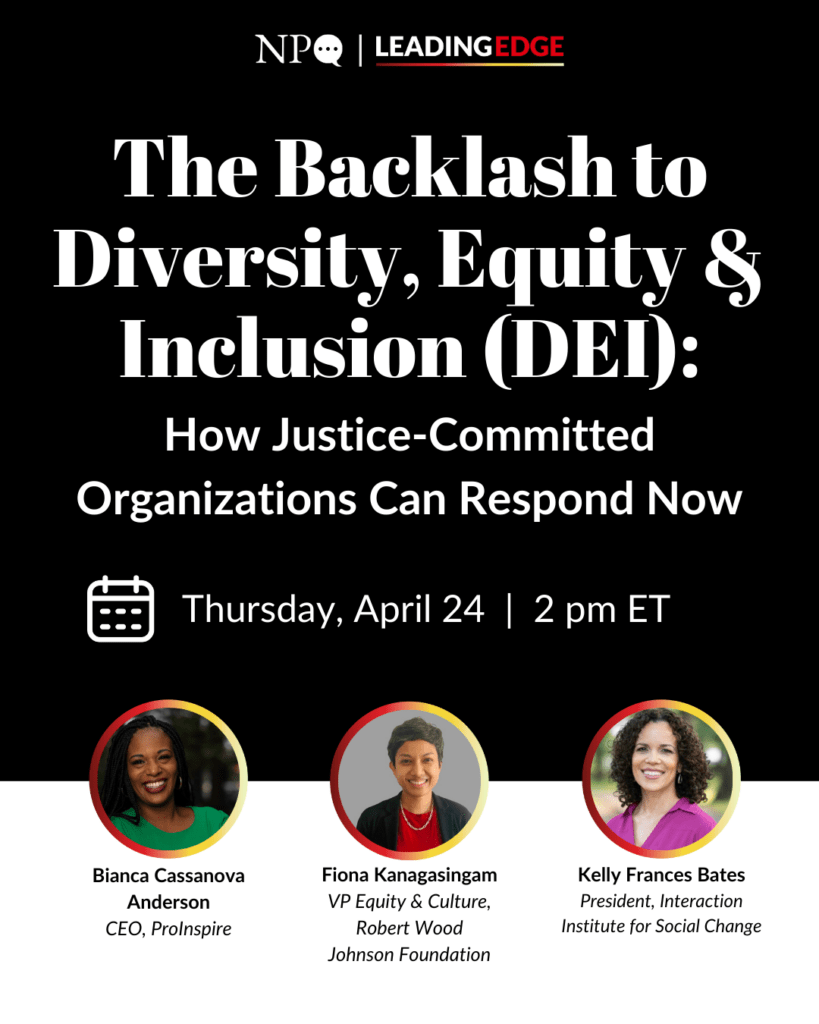August 7, 2014; Philanthropy News Digest
The California Association of Nonprofits (CalNonprofits) is the latest—and largest—state nonprofit association to issue a report on the economic impact of nonprofits in the state’s economy. The report, Causes Count: The Economic Power of California’s Nonprofit Sector, was released at CalNonprofits’ annual policy conference last week in Los Angeles. Like the burgeoning membership of CalNonprofits, Causes Count has a lot in it that warrants attention and discussion about nonprofits.
As described in PND’s coverage, the highlights include the following:
Sign up for our free newsletters
Subscribe to NPQ's newsletters to have our top stories delivered directly to your inbox.
By signing up, you agree to our privacy policy and terms of use, and to receive messages from NPQ and our partners.
- The state’s 25,000 nonprofits and 50,000 grassroots or voluntary groups account for almost one million jobs, about six percent of the state’s total employment.
- As economic engines, California’s nonprofit and voluntary organizations oversee $328 billion in assets and account for $208 billion in annual revenues and $260 billion in goods and services.
- The state’s nonprofit workforce, according to the report, is more diverse that California’s adult civilian workforce as a whole.
- CalNonprofits also included survey results indicating that 80 percent of Californians “are confident that nonprofits act on the public’s behalf and deliver quality services.”
- While total employment in California is still four percent lower than it was in 2008 and wages are up only six percent, nonprofit employment has increased by 15 percent and total wages by 26 percent since 2008.
The economic impact of the state’s nonprofits is reflected in the growth of CalNonprofits itself—now with some 9,700 members, as we heard president and CEO Jan Masaoka say from the dais at the conference (we were there as participants in a wrap-up plenary). What was clear from some of the discussion at the conference was that CalNonprofits takes active but nuanced positions on public policy issues, offering legislators thoughtful insights that distinctly differ from narrow, self-interested, knee-jerk reactions on issues of concern to the sector.
There is more to the Causes Count report than the PND headlines, however. Principal investigator Laura Deitrick and her team from the Caster Family Center for Nonprofit and Philanthropic Research at the University of San Diego generated additional findings that merit discussion within the field:
- They write that nonprofits account for 15 percent of California’s Gross State Product (GSP). However, that figure is a combination of $132 billion in direct goods and services $128 through “indirect and induced effects” (pp. 13-14). We would be very cautious about overconfidence on indirect and induced impact numbers. It is the kind of problem that did in some of the measures of the impact of the federal stimulus, with the government citing indirect job creation and jobs retained as evidence of the success of the stimulus.
- The authors write that California nonprofits are showing growth in revenues on a trajectory that is higher than that of U.S. nonprofits overall. The period of this analysis is from 2009 through 2012 (p. 15), with a graphic showing a distinct uptick in California nonprofit revenues between 2011 and 2012. There are two issues of aggregation here: the aggregation of revenues from different sources and the aggregation of nonprofits. We suspect that it might be important to pull apart the revenues and figure out how much stimulus-related revenues accounted for some of the nonprofit sector’s revenue growth.
- It is also clear, however, that within the nonprofit sector, disaggregating by type of nonprofit shows that nonprofits are not all in the same boat in terms of revenues or assets. Causes Count provides one table (p. 16) that shows higher education nonprofits comprising one percent of the total number of (c)(3)s filing 990s, but nine percent of total nonprofit revenues and 19 percent of nonprofit assets; nonprofit hospitals at 0.5 percent of the total number of (c)(3)s, but 37 percent of revenues and 35 percent of assets; and human services nonprofits accounting for 34 percent of the 41,627 990 filers, but only taking in 12 percent of revenues and controlling just 10 percent of assets.
- The report characterizes California’s foundation community as “net exporters,” having sent $1.3 billion in grants in 2011 to out-of-state recipients while California nonprofits got only $1 billion in grants from non-state foundations (p. 19). Given the massive growth of California’s foundation community, hardly a parochial one despite the dominance of large health conversion foundations whose charters require a significant emphasis on California benefit, the presence of large national funders such as Hewlett and Packard, just to name two, means a pattern of national grantmaking.
- The 501(c)(3) status of some groups may be almost the only similarity they share. In terms of employment, the report notes, “nonprofit hospitals account for only four percent of all nonprofit employers; yet, they account for 47 percent of total nonprofit wages. Conversely, human service nonprofits represent 38 percent of all nonprofit employers; however, they account for only 12 percent of total nonprofit wages” (p. 22).
- It isn’t clear how the authors determined that the nonprofit workforce is more diverse than the employed workforce of the entire state. They report that the state says 45 percent of the state’s workforce is female and 20 percent people of color (27 percent). In contrast, they write that a state survey of nonprofits revealed that one-third of the responding organizations “reported that at least half of their workforce is comprised of people of color.” It would appear that is a different measure and not comparable to the state’s employment diversity numbers. A little surprising for a report from California with some significant attention to the roles of volunteers within the text is a lack of attention to addressing the racial and ethnic composition of the boards of the state’s nonprofits. Even within the employment picture, there is no indication of the proportion of the nonprofits that are led by people of color, much less the match between people of color-led nonprofits and the communities and constituencies they are meant to serve.
These questions aren’t criticisms of the excellent work done by Dietrick and her team. Rather, we would hope that every nonprofit economic impact study generated better public debates about and deeper understandings of nonprofit demographics and finances than California’s Causes Count.—Rick Cohen












